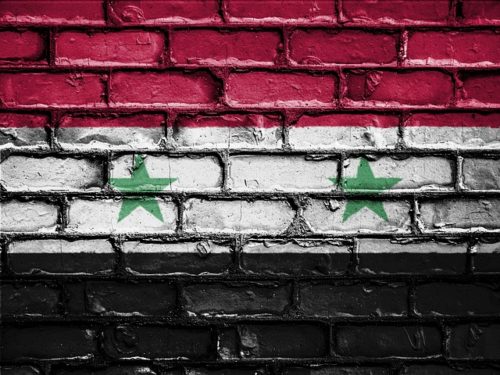Guest post by Alexei Anisin
More than 200 people have been killed, and thousands arrested, during recent protests in the Iranian Islamic Republic. When the price of gasoline increased by 50 percent on November 15th, protesters fed up with Ayatollah Ali Khamenei’s government spilled into the streets in more than 100 different locations, from metropolitan areas to smaller cities, making this the broadest and most diverse wave of protests in Iran in years.
The government response has been swift and brutal. Protesters, most of whom are under 30 years old, have been met with tear gas, water cannons, and, in some cases, live ammunition by state forces, including the Islamic Revolutionary Guards Corps, local police, and riot forces, in what journalists are calling “the deadliest political unrest since the Islamic Revolution 40 years ago.” The regime deliberately covered up its mass crackdown and effectively blacked out internet connectivity for more than 10 days.
It’s not Iran’s first experience with protest massacre—which is defined as severe state-sanctioned violence, with a minimum of 10 fatalities over a two-day time span, inflicted on an organized opposition movement, social movement, or spontaneous protest. While the 1978 Iranian massacre of protesters, with an estimated 501 fatalities, is widely regarded to have contributed to the subsequent 1979 revolution, Iran also experienced a protest massacre during the attempted “Green Revolution” of 2009, with an estimated 10 fatalities, and at least 25 fatalities were reported during a protest in late December of 2017.
Though spectacular (and horrific) in its own right, what is unfolding today in Iran is not uncommon for protest massacres. From the 1848 French Revolution, the first Russian Revolution, the Indian struggle against British colonialism, Eastern European communist transitions, and the 2011 Arab Spring, my research of 76 protest massacres between 1819-2017 indicates that many massacres occurred outside of international and civil war; most (58 percent) were carried out on protests that challenged a head of state; and a majority (43 percent) were carried out against dissidents who used fully nonviolent direct action. (Twenty-three percent of massacres were carried out on protesters who used marginal violence such as fighting, physical charging, etc.; 18 percent on those who used fully violent methods including guns and knives; and 16 percent on unarmed violent protests, i.e., stones, Molotov cocktails.)
In the southern Iranian city of Mahshahr, up to 100 protesters were killed by machine-gun fire in a marsh that they retreated to after gaining territory in both urban and suburban sectors of the city. This massacre occurred after several days of rife exchanges between protesters and the Revolutionary Guard. The former gained ground on the latter, taking substantial parts of the territory of the city and its surroundings. It appears that dissidents in Mahshahr resisted peacefully, making the Mahshahr massacre typical of other cases.
In other incidents, unarmed resistance has been adopted by protesters resulting in the destruction of buildings, gas stations, and cars. According to Amnesty International, at least 16 protesters have been killed in Kermanshah. Additionally, two separate massacres, both with a minimum of 14 fatalities have been reported in Bandar-e Mahshahr and in Javanroud. Unfortunately, greater detail of these two massacres is not available at the time of writing this post. It is also likely that other massacres were perpetrated in different regions of Iran over the last three weeks.

What this severe crackdown tells us about Iran and its future
If there is one way the protest massacres in Iran differ from others, it is in their swiftness and brutality, and the likelihood that they are uncontested internally. Of the massacres I analyzed, only 7 percent occurred when protests had been ongoing for only a week prior to the massacre (31 percent of massacres were carried out 30 days after mobilization began; 26 percent after 90 days; 28 percent after 365 or more days).
Though Iran unveiled a “budget of resistance,” in part to quell widespread anger among large swathes of Iranians at economic hardship, it has made no concessions to the opposition, signaling it will do whatever it takes to maintain the status quo. According to the International Crisis Group, the Iranian leadership has recently lauded its ability to maintain control over these protests and regional security, and blamed foreign power interference for spurring unrest. Meanwhile, security forces have been obedient to repression orders.
This does not bode well for protesters. Research has shown that security forces defecting from their principal is correlated with impressive success rates of civil resistance campaigns, and some have even argued that defection is necessary for the occurrence of a protest-led democratic revolution.
Although dissent has been nearly quelled, this does not mean a new wave of unrest won’t arise in the near future. Iran needs to carry out major reforms in order to avoid domestic upheaval. If mass dissent does arise again, the behavior of security forces will be critical—both in determining the prospects of activists on the one hand and the strength of the government on the other. If Iran’s rulers are able to effectively exploit regional instabilities to legitimize repression and maintain cohesiveness and obedience among the security forces, Iran may see yet another wave of severe crackdowns.
Alexei Anisin is a senior lecturer at the School of International Relations and Diplomacy at the Anglo-American Univerisity.






